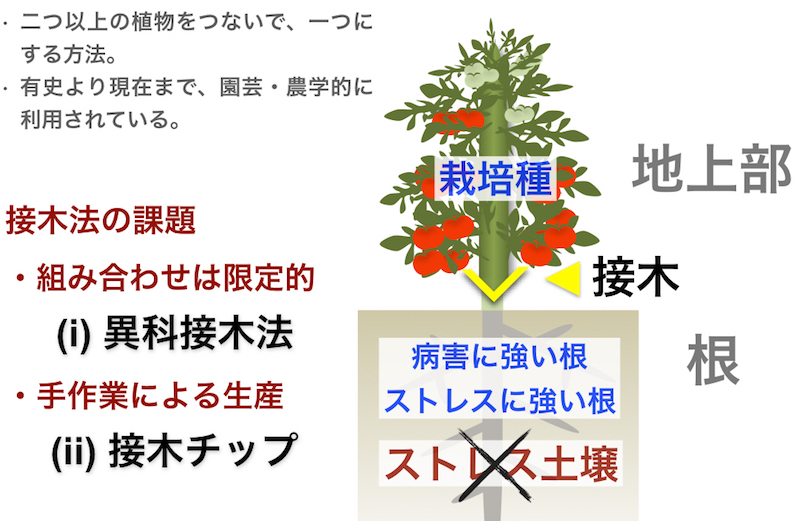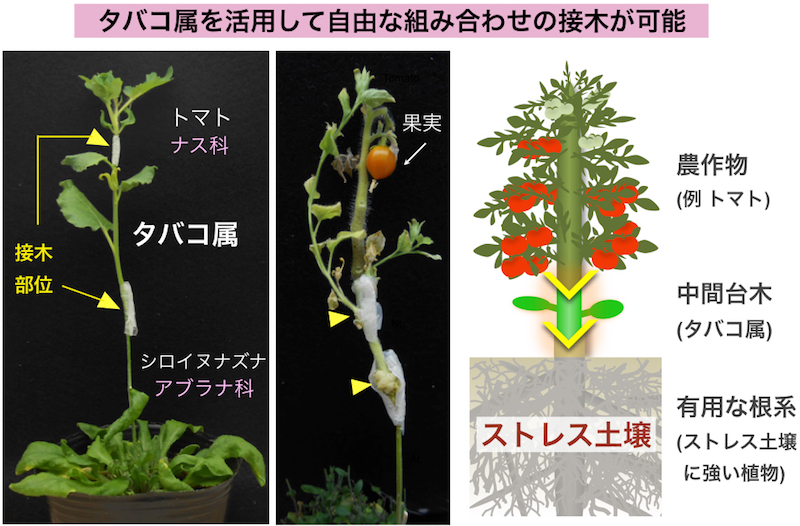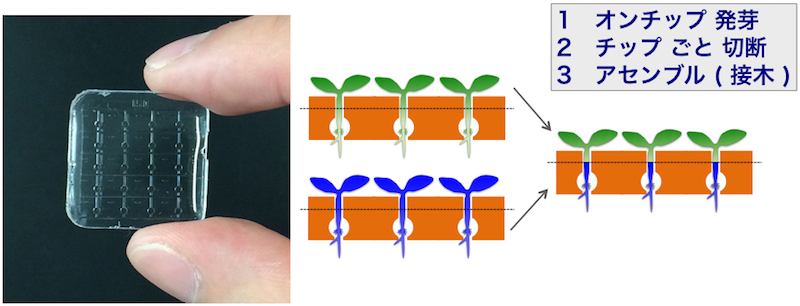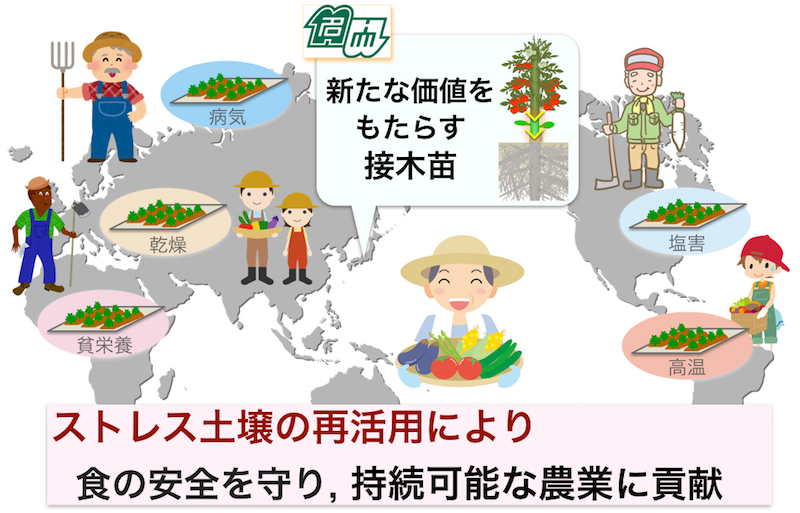English version under construction
PurposeWhile the expansion of monoculture in agricultural production contributed to the agricultural industrialization, its adverse effects led to the loss of biodiversity, soil decay and eventually global environmental destruction. Although attention is given to the vulnerability and environmental risks included in the monoculture under the current task of the rapid population of the world population, it is a convenient system for producers and it is practically difficult to stop immediately . Therefore, while accepting the monoculture without excluding it, building a new cultivation system to ensure biodiversity is realized by revolutionizing the classic agricultural method called "grafting".
Grafting is a technique that brings out two useful plants together by touching two plants together, and it is an important technique for agriculture and horticulture since long ago. The graft consists of a plant (scion) which forms the aboveground part and a plant (rootstock) which forms the roots of the underground part, using cultivar varieties at the aboveground part and varieties resistant to soil diseases and soil stress in the underground part , It is possible to cultivate agricultural crops healthily. However, there are strong technical restrictions on grafting, there is a phenomenon called grafting incompatibility that grafting is not established depending on the combination of grafted plants. If this limitation can be solved, the conventional grafting method is expanded, and various agricultural resources can be freely combined and used by grafting. That is, it is possible to use a single cultivar variety on the ground part which becomes an edible part, a variety as a rootstock under the underground part and various kinds of plant species and use a monoculture to cultivate one kind of agricultural products While implementing, a robust cultivation system that maintains the diversity of soil ecosystems can be realized in the basement.
This laboratory further develops the recently developed odontogenic grafting method based on plant science and (1) technology to improve adhesion of grafted part, (2) establish technology to promote the development of passage organization We are aiming to construct new agriculture resource utilization platform technology which realizes jointly and globally expanded combination of grafting, realizing both monoculture and diversity.

BackgroundAttempts to academically understand grafting events are not so much for the spread of technology, and there are many unexplained parts. According to the morphological analysis, it is known that new cells grow from the wound at the graft site, these cells adhere, and eventually they develop the tunnel organization and restore the grafted area as originally. Molecular level analysis has just been started, including our research. We are now in an era where gene sequences can be obtained at low cost and high speed, and we have also established a research system to obtain genome information of tobacco genus and to investigate the molecular mechanism of grafting. In this laboratory we describe the grafting phenomena scientifically and aim for establishment of next generation type technology by a biotechnological approach.
Grafting is accomplished by a variety of biological events occurring step by step in chronological order. In principle, wound responses, tissue / cell dedifferentiation, cell proliferation, cell adhesion, cell differentiation / reorganization take place consecutively over several days to several weeks. The theme of this research is to capture the grafting phenomena at the molecular level and to establish a system to control the grafting event highlighting the key molecule which is indispensable for each process, various "enclosing" the question which makes the essence of life science . Furthermore, we are addressing the problem of what is the determinant factor of grafting / incompatibility of grafting, pursuing the basic form of biological interaction such as plant defense mechanism and symbiotic mechanism in ecosystem such as self self / non self recognition and immune mechanism . These are important tasks to be addressed by many botanical researchers, and in this laboratory, we approach the academic "question" universally involved in plant science through the biological phenomenon of grafting.
Grafting method

Results(1)Targeted grafts are indispensable technologies for agriculture with a history of more than 2,000 years and are technologies that have various uses, high convenience, and reduced risk to ecology and the natural environment. However, it is frequent that grafting is not established due to graft incompatibility, and it has hindered widespread adoption of technology. By discovering tobacco plants that realize the grafting of distantly related plants beyond the department that we considered impossible in our research group and expanding and utilizing their abilities through interdisciplinary understanding, I would like to resolve issues related to agricultural resources we hold. Previous studies have revealed that tobacco have the potential to be grafted with almost all land plants, including agricultural resources to be edible and raw materials.


Results(2)Grafting is a method of connecting two or more plants to one individual by surgery, not only because it is important since agricultural history but also in the field of plant science in recent years, in spatial understanding of individual occurrence It is an indispensable technology. We developed a grafting device that makes simple and efficient "grafting method immediately after germination of model plant Arabidopsis thalassus" that only a limited experimenter could perform, by soft lithography combining MEMS technology and 3D printing technology ing.

Task(1) Establishment of technology for improving adhesion By elucidating the heterogeneous grafting ability of the genus Tobacco molecular biologically, we will build a technology for improving adhesion biotechnologically.
Molecular biological analysis of heterogeneous grafts of tobacco genus
We have analyzed the time series of grafting of tobacco genus to graft establishment so far.
➢ Time of cell proliferation, cell adhesion, reorganization was identified by morphological analysis of tissue level.
➢ To elucidate the molecular mechanism of the graft, transcriptome, proteome, metabolome, and formonomic analysis were performed, and statistically significant molecular events were extracted by each omics analysis.

Morphological analysis of grafted areas
(2) Establishment of technology to promote development of passage organization
Based on knowledge about the occurrence of passage organization accumulated in the field of plant science up to now, we will work on building a technology to control the development of the organization of transit organization by biotechnological / biochemical approach.
➢ Biotechnological approach
➢ Biochemical Approach
